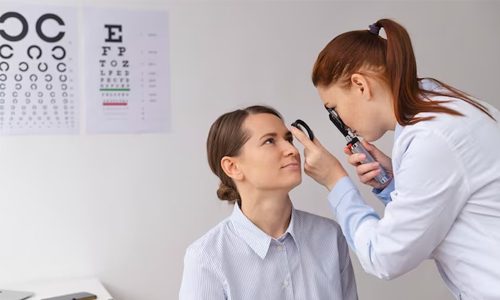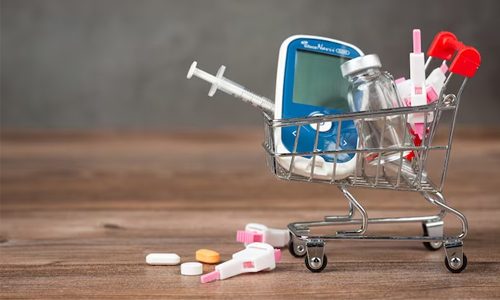How Does Diabetes Affect the Eye? Diabetes is a chronic condition that affects the body when the sugar levels are abnormally high. Insulin is a hormone that helps other cells absorb energy from the food you consume. Lack of insulin production results in diabetes, which can affect the retina, vitreous, lens, and optic nerve.
When the body becomes irresponsible in insulin production, it raises the sugar level in the bloodstream. High sugar in the blood damages the eyes and vision; it can modify the fluid levels and tissue of the eye, leading to blurry vision. Untreated hyperglycemia (high sugar level) tends to result in damaging the blood vessels behind the eyes. Further, it leads to blood or fluid leakage and swelling.
Diabetes even causes irreversible eye damage and poor vision. Reducing blood sugar levels and proper medication may prevent vision loss.
The diabetes-related eye problems began with damaged blood vessels. Here are the five ways it affects the eyes and vision.
- Cataract
Cataracts occur when protein forms on the lens, clouding the focus. Compared to non-diabetic patients, individuals with diabetes are more vulnerable to cataracts. The lens acquires oxygen and glucose from the fluid aqueous humor from the front of the eyes. If the glucose level rises, it results in clouding or swelling of the lens. It can affect people of any age, however, diabetes causes cataracts in the early stage which leads to blurred vision and glare. Cataract surgery is the right option as it is safe and effective.
- Glaucoma
When the fluid pressure increases in the eye, it results in Glaucoma. It could damage the blood vessels and optic nerve, leading to sight loss. Though there is no cure for glaucoma, it can be managed with treatments like eye drops, medicine, laser treatments, and other surgeries. Diabetes patients are at higher risk of developing glaucoma earlier.
- Diabetic Retinopathy
The retina is a cluster of inbuilt cells of the eyes that help transform light into signals and send them through the optic nerve to the brain. Diabetic Retinotheraphy occurs when high blood pressure causes the retina blood cells to bleed or leak fluid. It leads to cell loss in the retina, blurry vision, retinal detachment, and blindness.
Here are the 5 stages of Diabetic Retinopathy
Mild Nonproliferative Retinopathy
A small swelling in the blood vessels occurs at the initial stage.
Moderate Nonproliferative Retinopathy
The second stage is where the blood vessels become incapable of transferring the blood
Severe Nonproliferative Retinopathy
The high blood sugar results in blocking the blood vessels that support the retina. Further, the eye builds up new blood vessels but lacks proper formation.
Proliferative Diabetic Retinopathy
In the next advanced stage of eye disease, the eye develops new blood vessels that are fragile and bleed often.
Diabetic Macular Edema (DME),
It happens as a cause of fluid accumulation in the retina. It affects the blood vessels and leads to vision loss.
- Blurry Vision
Blurry vision can be an initial sign of a diabetes eye problem. The initial stage of eye problems can be easily solved by wearing glasses or lenses. The fluid leak may cause the eye lens to swell, leak, or even change its shape. Blurry vision is nothing to be worried about, stabilizing the blood sugar level could clear the fuzzy or blurry vision.
- Maculopathy
Maculopathy arises when high blood sugar affects the eyes. The macula is the predominant part of the eye for providing sharp vision for reading, driving, and other important tasks. Based on the severity of the swelling the physician will decide whether it’s mild or serious.
How to Deal with Diabetes?
The autoimmune and genetic forms of diabetes are unpreventable. However, there are some possibilities to reduce the risk of prediabetes. Though diabetes is uncurable, following a diabetes dietary plan will reduce the risk of diabetes.
- Consume Physician-prescribed food items may help prevent diabetes eye problems
- As physical fitness plays a major role in diabetes, workouts should become a habitual activity.
- Limit alcohol consumption
- Eat fiber-rich foods such as nuts, seeds, whole grains, beans, and grain breads.
- Don’t skip diabetes medications and do regular check-ups
- Meditate often and help reduce depression
Important note:
In some cases, diabetic eye disorders can be managed with glasses, drops, or other medications. With proper care and treatments, the risks of diabetic eye conditions could be reduced, and the vision power can be saved.




















